A healthy life requires vitamins and minerals, and vegetables are the most credible source. As rich sources of minerals, carbohydrates, vitamins, and proteins, they play an essential role in the human diet. As a result of their high yields and short cultivation duration, vegetables are also a leading source of income for farmers. The long-term reduction of rural poverty and unemployment can be achieved through a profitable trade for smallholder farmers.
Various vegetable crops can be grown in India throughout the year due to their varied agro-climatic zones. Nowadays, people are more inclined to buy healthier vegetables as their standard of living has improved, and they are aware of the benefits of quality food intake. Today, farmers are adapting modern crop-yielding improvement methods to achieve higher yields, better quality biotic resistance, and flexibility to adapt to changing climatic conditions.
High yield hybrid vegetable varieties in India
Beetroot
Ooty-1
A selection from the local type, it was released in 1992 by TNAU, Coimbatore. It can attain a height of 40 to 52 cm, and its roots have thin skin and are blood-red in color. It contains 1.52% protein, 10.25% carbohydrates, and 6mg/100g vitamin C and can be used as a salad dressing. It yields, on average, 31 to 45 tons of roots per hectare. South Indian hills are suitable for growing it.
In case you missed it: How to Grow Vegetables in Aquaponic Systems: Types, Methods, Requirements, and Disadvantages
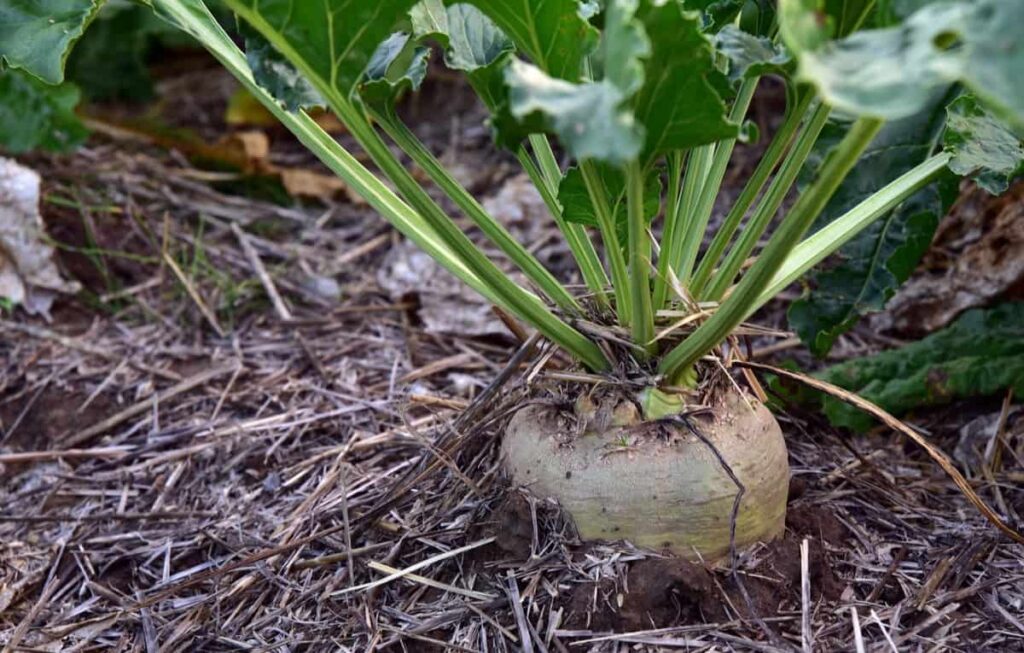
Crimson globe
Suitable for warm and cool season production, the crimson globe is an efficient, high-yielding variety. With slender, attractive taproots, the roots are uniformly round to flat-round in shape. The crimson globe has a light zoning pattern. Medium-sized tops with refined crowns are medium green in color. The crimson globe is extremely heat-tolerant. The crimson globe is suitable for fresh markets, processing, and prepackaging. The production process takes 60 to 70 days during the warm season and 90 to 110 days during the cool season. 20 to 25 tons of beetroot will be produced per hectare with this variety.
Detroit dark red
Compared to traditional Detroit selections, Detroit dark red has a deeper color, smoother skin, and a more refined taproot and crown attachment. During early development, Detroit dark red’s slow bolting habit and good round shape make it ideal for bunching, topping, and home gardens in temperate and subtropical climates. In the warm season, production takes between 70 and 80 days. Per hectare, this variety will produce 20 to 25 tons of beetroot.
Bitter Gourd
Punjab Kareli-1
It was released by Punjab Agricultural University, Ludhiana, in 2009. Smooth and serrated green leaves characterize this variety. They produce thin, green fruits that are long and thin. Sixty-six days after planting, the crop is harvested. The average weight of the fruits is 50 grams, and the average yield is 12 tons per hectare.
In case you missed it: How to Start Microgreens Vertical Farming: For Indoors, Greenhouse, Growing Tips, Cost, and Benefits
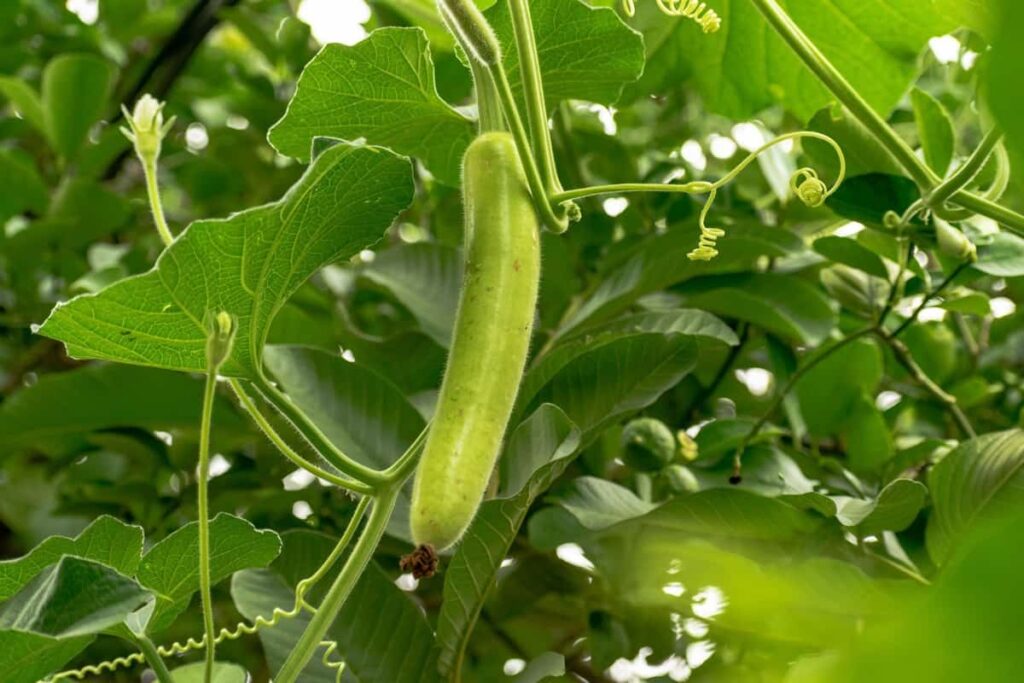
Punjab-14
It was released by Punjab Agricultural University, Ludhiana, in 1985. The plant has small vines, and its fruits average 35 grams in weight and are light green. It is suitable for sowing during the rainy or spring seasons. A hectare of this crop yields 12 tons on average.
Punjab Jhad Karela-1
In 2017, this variety was released. A hectare of this crop yields approximately 9 tons. The plant bears small green fruits.
CO 1
Fruits of this variety are medium in size and dark green. On average, the fruits weigh 100 to 120 grams. A hectare of this variety yields 14 tons and matures in 115 days.
Bottle gourd
Arka bahar
This variety is a pure line selection from Karnataka’s local collection (IIHR-20). The foliage is dark green with soft leaf surfaces, and the vines are vigorous. A crock neck is not present on its medium, long, and straight fruits. It changes to a light green shining fruit skin (1 kg) when tender. Blossom end rot is not a problem for this variety. A hectare of this variety yields 40 to 45 tons after maturing in 120 days.
Punjab Komal
Punjab Agricultural University, Ludhiana, released it in 1988. It is an early maturing, medium-sized, oblong fruited variety. Approximately 70 days after sowing, marketable fruits are ready for harvest. Fruits with pubescence are light-green in color. There are between 10 and 12 fruits per vine. The fruits are tender from the 4th to 5th node and borne on medium-long, thin pedicels. The cucumber mosaic virus is not a problem for it. There is a potential yield of 40 tonnes per hectare.
Pusa Naveen
Indian Agricultural Research Institute, New Delhi, recently released this variety. The first harvest takes about 60 days and yields an average of 30 tons per hectare. There is no crook-neck or curve on the fruits. They are perfectly cylindrical and straight. The average weight of a fruit is 850 grams.
Cabbage
Pride of India
With medium-large fruit size, it is a high-yielding cabbage variety. A single cabbage weighs between 1.5 and 2 kilograms. There is an average yield of 20 to 29 tonnes per hectare, with a harvesting time of 75 to 85 days after transplanting.
In case you missed it: Hybrid High Yield Onions Varieties in India: For Rabi, Kharif, Late, and Early Kharif
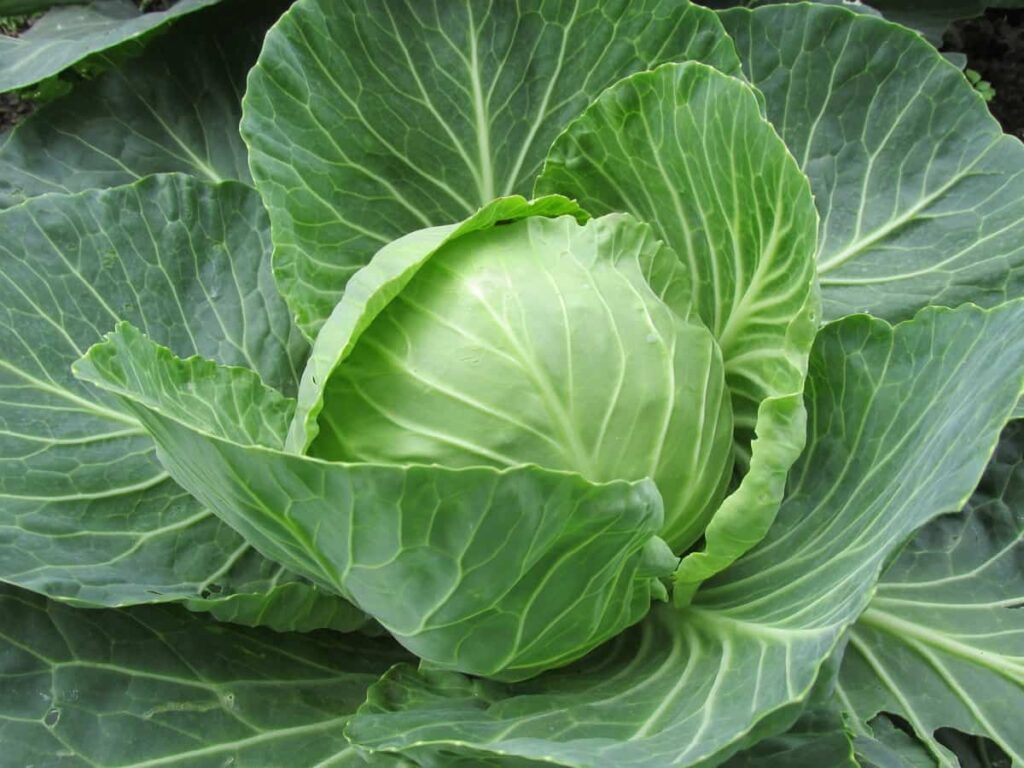
Pusa Synthetic
There is a slight cream-white cover and medium-sized heads on this variety. It takes about 130 days for the plantation to reach maturity, yielding 35 to 46 tonnes per hectare.
Pusa Ageti
It is an F1 hybrid cabbage variety. The heads have grey-green leaves & are medium in size. Upon transplantation, it matures in 70 to 80 days, weighing 600 grams to 1.5 kilograms on average.
September Early
The heads of this variety are slightly flat and oblong. Each one weighs between 3 and 5 kilograms. 105 to 115 days are needed for it to reach maturity. There is a slight susceptibility to black rot with September Early.
Capsicum
Bomby (red color)
As a variety that matures early, it is a good choice. Plants of this variety are tall and robust, with good branching. For fruit development, it needs adequate shelter. In terms of weight, it contains 130 to 150 grams of dark green fruits that turn red when they reach maturity. A long-term shelf life makes it a good choice for transportation over long distances.
In case you missed it: South Dakota (SD) Vegetable Planting Calendar: Month-wise Chart, Dates Guide, Schedule for Fall, Winter, Spring, and Summer Seasons
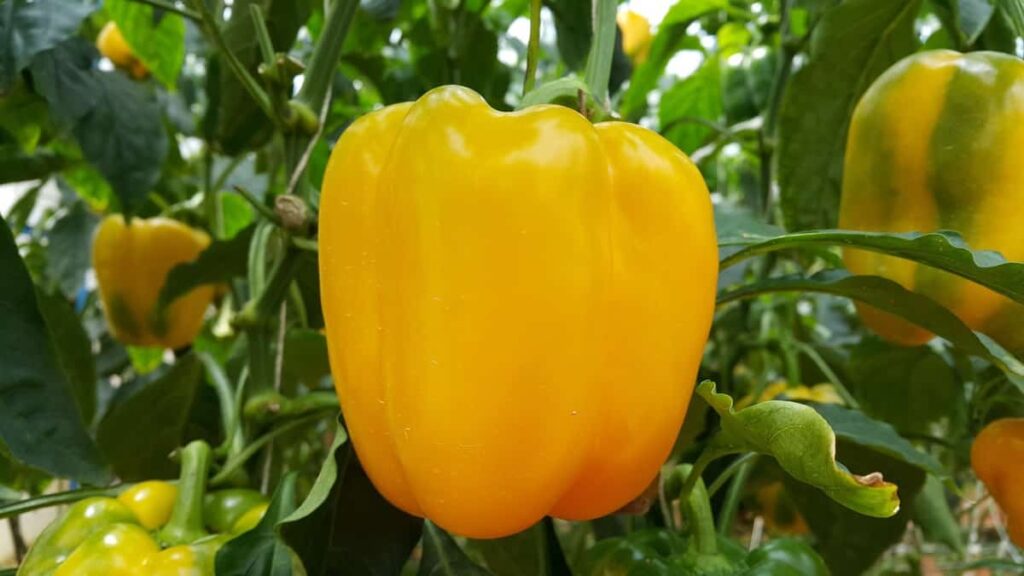
Orobelle (yellow color)
Mostly cold climates are suitable for growing it. There is a medium thickness to the wall of the almost square fruits. At maturity, the fruits become yellow and weigh about 150 grams. Plants of this variety are disease-resistant and can be grown in greenhouses or open fields.
Indra (green)
Tall and bushy, this variety has an attractive appearance. Dark green leaves with dense foliage are found on this plant. The fruits weigh an average of 170 grams and are dark green. It takes 50 to 55 days for fruit to develop after sowing. With a longer shelf life, it is ideal for long-distance transportation.
Cucumber
Cucumber Pusa Long Green (DC-83)
The Indian Agricultural Research Institute developed it and released it in 2019. It is suitable for the spring-summer and Kharif seasons in Punjab, Uttar Pradesh, Bihar, and Jharkhand. At the end of the fruit, it has brownish-green blotchy spots near the stem and light whitish-green stripes. In addition to having non-hairy, soft skin and crispy and tender flesh, it is 15 to 18 cm long. During Kharif and spring-summer seasons, it will be ready for harvesting in 45 to 50 days and 50 to 55 days after sowing. Fruit weighs between 150 and 160 grams on average. This variety produces an average yield of 19 to 20 tons per hectare.
Pusa seedless Cucumber
It is also a cucumber variety developed by the Indian Agricultural Research Institute. Delhi NCR is a good area to cultivate and is suitable for winter cultivation under protected conditions. Generally, it takes 40 to 45 days for the first fruit to be harvested. The fruits are uniform in shape, dark green, glossy, cylindrical, straight, non-hairy at the blossom end, and have tender skin and crisp flesh.
Beans
Akra Sharath
The pods are round, stringless, and smooth, making them suitable for steaming. The pods are perfectly round, crisp, and fleshy without parchment on cross-section. The plants are bushy and photo-insensitive, which makes them suitable for the Rabi and Kharif seasons. Compared to checks, it produces a maximum number of pods per plant. In 70 days, this variety yields 18.5 tons per hectare.
Akra Arjun
The plants are bushy, robust, and photo-insensitive. The pods are green and have a smooth surface without any strings. It’s suitable both for rabi and for summer. It is resistant to the Mung bean yellow mosaic virus (MYMV). In 70 days, this variety yields 17 tons per hectare.
Akra Sukomal (New Release)
The pole bean variety produces high yields while being rust-resistant. It grows to an average height of more than 2.0 meters and is indeterminate. Pods are stringless, oval, green, and approximately 23 cm long. It takes 60 days for the first harvest. Kharif and Rabi seasons are both suitable for it. With this variety, you can expect a yield of 24 tons per hectare after 100 days.
Radish
Pusa chetki
Ideally, sowing should take place between April and August. Seed production in the Punjab region is suited to early maturing varieties. This plant has smooth, snow-white roots that are medium in length. Per hectare, it yields 26 tons.
Pusa Himani
It is recommended to sow this variety during the fortnight of January-February. The roots of this plant are white with green shoulders. After sowing, they are ready for harvest in 60 to 65 days. An average yield of 40 tons per hectare is achieved with this variety.
Punjab Pasand
This variety should be sown at the earliest in the second fortnight of March. A 45-day harvest is possible after sowing, making it an early maturing variety. The roots are long, white, and hairless. In addition to being suitable for the primary season, it can also be sown in the off-season. There is an average yield of 53 tons per hectare during the main season, whereas 34 tons per hectare during the off-season.
Tomato
Pusa Rohini
This variety was first introduced by the Indian Agricultural Research Institute in 2005. Fruits of this variety can stay fresh for a more extended period. Their skin is smooth and thick, red, and medium in size. Per hectare, the average yield of this variety is 42 tons.
In case you missed it: High Yield Hybrid Tomato Varieties in India: For Winter, Summer, and Rainy Season

Pusa Upahar
Fruits of this variety are round, medium in size and have a thick pulp. The fruits of this variety are borne in clusters and contain three to five fruits each. IARI also introduced the variety in 1996. This variety yields around 37 tons per hectare on average.
Arka Shreshtha
It is an introduction from the India Institute of Horticultural Research, Bangalore. There is a greater shelf life for fruits of this cultivar. It produces an average yield of 70 tons per hectare and weighs around 60 to 70 grams per fruit.
Potato
Kufri Sindhuri
In addition to Bihar, Gujarat, Maharashtra, Punjab, Uttar Pradesh, Karnataka, and Jammu Kashmir, this potato cultivar is found in other states as well. It takes 110-120 days for this potato crop to mature. However, this potato can tolerate temperature and water stress to some extent. Early blight resistance is moderate in this variety and resistance to Potato Leaf Roll Virus. An average of 100 tons of potatoes are produced per hectare from this variety of potatoes.
Kufri Chandramukhi
The leading producers are Bihar, Gujarat, Haryana, Punjab, Madhya Pradesh, Himachal Pradesh, Uttar Pradesh, Orissa, and West Bengal. It has large, round, white, somewhat flattened eyes and pale white flesh that takes 80 to 90 days to develop. 62 tons of potatoes per hectare are produced on average from this variety.
In case you missed it: How to Grow Potato Plants Faster: Best Tips to Increase Flowering, Fruiting, and Yield
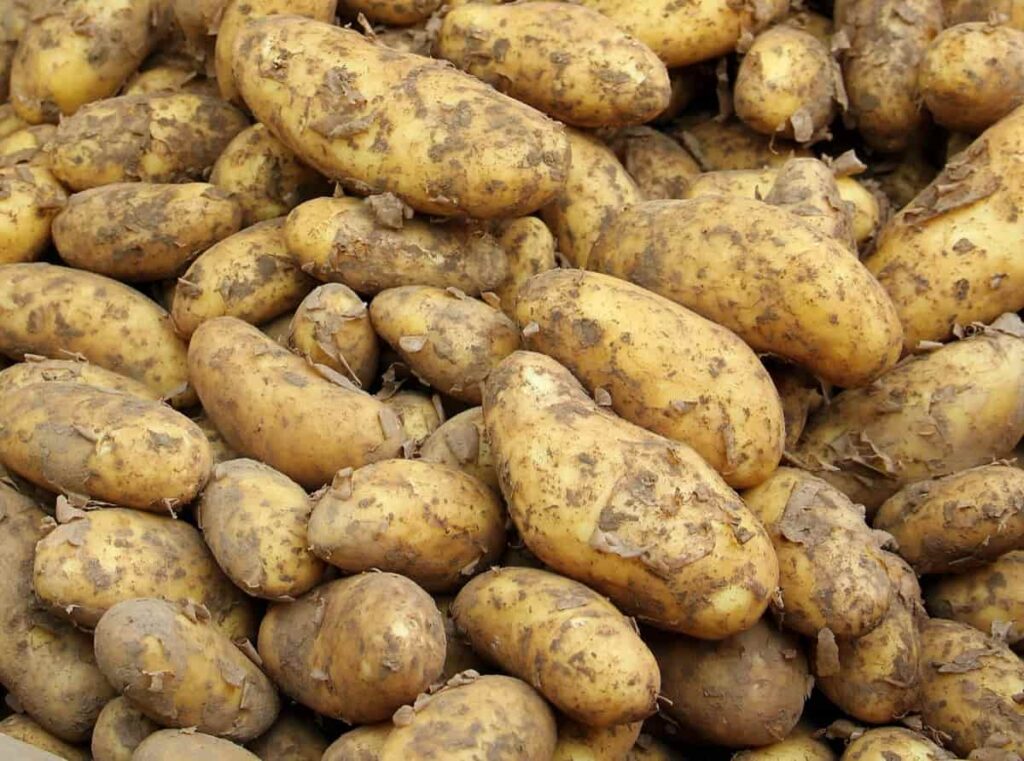
Kufri Lalima
In Uttar Pradesh and Bihar, this potato crop is mainly grown. With medium-deep eyes and white flesh, this potato variety has a large to medium size and is slightly red. There is an average yield of 40 tonnes per hectare for this potato crop, which matures in 100 to 110 days. Despite its moderate resistance to early blight and Potato Virus Y, this potato is unsuitable for processing.
Pumpkin
PPH-1
It is an early maturing variety that was released in 2016. These plant vines are dwarf, their internodal length is short, and their leaves are dark green. The fruit is round in shape and consists of small seeds. Immature fruits have mottled green colors, mature fruits have mottled brown colors, and the fruit’s flesh is golden yellow. The average yield per hectare is 50 tons.
PPH-2
In 2016, this variety was released. Unlike wide other varieties, it matures extra early. The vines are dwarf, the internodal length is short, and the leaves are green. The fruits are round in shape and small. Fruits are light green when immature and smooth brown when mature. Fruits contain golden yellow flesh. Approximately 55 tons are produced per hectare on average.
Punjab Samrat
Their vines are medium-long, their stems are angular, and their leaves are dark green. The fruits of this plant are small and round. It has a mottled green color when immature, turning pale brown when mature. The golden yellow flesh is present in the fruit. It gives an average yield of 40 tons per hectare.
Seasons and their mature period for the cultivation of different vegetables
| Vegetable Name | Growing Season – North India | Growing Season – South India | Days to Maturity |
| Apple Gourd | Feb – Mar | Feb – Mar | 70 to 80 days |
| Jun – Jul | Jun – Jul | ||
| Beetroot | Oct – Nov | Aug – Nov | 80 to 90 days |
| Bitter Gourd | Feb – Mar | Nov – Dec | 55 to 60 days |
| Jun – Jul | Dec – Jan | ||
| – | Jun – Jul | ||
| Bottle Gourd | Feb – Mar | Nov – Dec | 55 to 60 days |
| Jun – Jul | Dec – Jan | ||
| – | Jun – Jul | ||
| Broccoli | Aug – Sept | Aug – Sept | 90 to 100 days |
| Cabbage | Sept – Oct | Jun – Jul | 90 to 100 days |
| Oct – Nov | |||
| Capsicum | Nov – Jan | Jan – Feb | 95 to 100 days |
| May – Jun | May – Jun | ||
| – | Oct – Nov | ||
| Carrot | Aug – Sept – Oct | Aug – Nov | 75 to 80 days |
| Cucumber | Feb – Mar | Jun – Jul | 50 to 70 days |
| Jun | Sept – Oct | ||
| Jul | Dec – Jan | ||
| Beans | Feb – Mar | – | 45 to 50 days |
| Lettuce | Sept – Oct | Oct – Dec | 45 to 55 days |
| Okra | Feb – Mar | Jan – Feb | 45 to 50 days |
| Jun – Jul | May – Jun | ||
| – | Oct – Dec | ||
| Onion | May – Jun | Mar – Apr | 150 to 160 days |
| May – Jun | |||
| Sept – Oct | |||
| Peas | Sept – Oct – Nov | Sept – Oct – Nov | 55 to 60 days |
| Radish | Aug – Jan | Sep – Jan | 40 to 45 days |
| Spinach | Sept – Nov | Sept – Oct – Nov | 60 days |
| Feb | |||
| Tomato | Jun – Aug | Jan – Feb | 110 to 115 days |
| Nov – Dec | Jun – Jul | ||
| – | Oct – Nov | ||
| Turnip | Oct – Nov | Oct – Nov | 40 to 50 days |
| Cauliflower (Early) | Mid – June | Jun – Jul | 120 to 125 days |
| Aug – Sept | |||
| Cauliflower (Late) | Aug – Sept – Oct | Jun – Jul | 120 to 125 days |
| Aug – Sept | |||
| Potato | Oct – Dec | Oct – Dec | 70 to 120 days |
| Pumpkin | Jan – Mar | Jun – Jul | 70 to 75 days |
Conclusion
Growing a high-value crop can yield better returns for farmers. For vegetables to meet the increased demand throughout the year, 3 to 4 crops can be cultivated throughout the year. In addition to accommodating changes in food consumption, particular vegetable demands can also be met. If you live in the following states or regions and plan to grow vegetables this High Yield Hybrid Vegetable Varieties in India article may help you grow different vegetables in different seasons like Rabi and Kharif.
| Andhra Pradesh | Karnataka |
| Arunachal Pradesh | Kerala |
| Assam | Madhya Pradesh |
| Bihar | Maharashtra |
| Chhattisgarh | Manipur |
| Goa | Meghalaya |
| Gujarat | Mizoram |
| Central India | South India |
| Haryana | Sikkim |
| Himachal Pradesh | Tamil Nadu |
| Jharkhand | Telangana |
| Nagaland | Tripura |
| Odisha | Uttar Pradesh |
| Punjab | Uttarakhand |
| Rajasthan | West Bengal |
| North India | West India |
- How to Raise Pigs in Your Own Backyard: A Comprehensive Guide
- Budget Friendly Sheep Shed Ideas: Cheap and Low-Cost Tips
- How Much Do Cattle Farmers Make: Revenue Streams in Cattle Farming
- Management Pests and Diseases in Your Cotton Field
- Sheep Farming Business Plan for Beginners
- Aquaponic Farming at Home: A Step-By-Step Guide
- Profitable Village Farming Business Ideas in 2024
- High-Yield Aquaculture: Fast-Growing Fish for Farming
- Effective Fish Pond Construction Techniques for Beginners
- Irrigation and Water Management in Pineapple Farming
- Blossom to Harvest: Mastering Flowering and Pollination in Papaya Farming
- Pig Fattening Essentials: From Selection to Sale for Beginners
- Raising Wagyu Cattle: A Complete Guide for Premium Beef Production
- Soil Types and Their Water Holding Capacity
- Optimizing Irrigation Schedules for Coconut Groves for Enhanced Yield
- Espresso Your Garden: Coffee Grounds for Healthier Acid-Loving Plants
- The Best Soil Mix for Snake Plants: How to Mix Your Own Snake Plant Soil
- Green Thumb Success: Expert Tips for Cultivating Greenhouse Beans All Year Round
- Bloom All Year Round: The Ultimate Guide to Indoor Hyacinth Care
- Eco-Friendly Gardening: How to Make Liquid Fertilizer from Kitchen Waste
- Ultimate Guide to Grow Anise in Pots: Explore Seed Propagation to Harvesting
- Guide to Raising Chester White Pigs: Discover Breed Facts to Growth Management
- Mastering the Elegance: The Ultimate Guide to Weeping Cherry Tree Care, Planting, and Maintenance
- Ultimate Guide to Planting Garlic in Grow Bags: Growing Strategies for Beginners
- How to Fix Spider Plant Leaf-Related Problems: Natural and Organic Remedies
- 10 Reasons Why Your Tulsi Plant is Shedding Leaves: Home Remedies and Solutions
- Optimizing Growth and Yield: The Advantages of Palm Bunch Ash Fertilizer
- Utilizing Neem Oil Extract as a Natural Pesticide for Hydrangea
- From Soil to Harvest: Various Ways in Which Farmers Can Use AI Tools
- Steps to Encourage and Induce Citrus Flowers: A Comprehensive Guide
- How to Fix Snake Plant Leaf-Related Issues: Natural and Organic Remedies
- Transform Your Garden into a Fragrant Oasis with Raat Ki Rani (Night Blooming Jasmine)
- Discover the Ideal Chicken Breeds for Philippine Farms
- How to Create a Poultry Egg Farm Business Plan for Profits
- Grow Lemon Cucumbers Like a Pro: Insider Techniques for Bountiful Yields
- Ultimate Guide to Caring for Your Pink Princess Philodendron: Tips for Thriving Variegation
